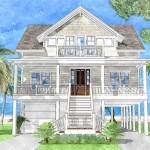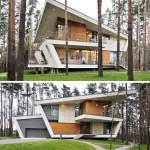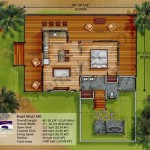Squirrel houses, also known as squirrel boxes, are structures specifically designed to provide shelter and protection for squirrels. These plans offer instructions and guidelines for building squirrel houses that cater to the needs and preferences of these animals.
Squirrel houses serve multiple purposes. They offer a safe refuge during inclement weather, provide a place for squirrels to sleep and rest, and facilitate breeding and nesting. In urban environments, squirrel houses can play a vital role in mitigating the loss of natural tree cavities, which squirrels rely on for shelter in the wild.
In the following sections of this article, we will delve into comprehensive squirrel houses plans, exploring the various designs, materials, and construction techniques involved in building these essential shelters for squirrels.
When building squirrel houses, careful planning and attention to detail are essential for ensuring the well-being and comfort of their inhabitants. Here are 9 important points to consider:
- Appropriate size: Dimensions should accommodate squirrels comfortably.
- Durable materials: Use weather-resistant materials like wood or plastic.
- Entrance hole placement: Position it high enough to deter predators.
- Ventilation: Ensure adequate airflow to prevent moisture buildup.
- Drainage holes: Allow water to escape, keeping the interior dry.
- Predator protection: Design features to minimize access by predators.
- Multiple compartments: Provide separate nesting and sleeping areas.
- Easy access for monitoring: Include a hinged or removable panel for inspection.
- Natural appearance: Blend the house with its surroundings for camouflage.
By incorporating these considerations into your squirrel houses plans, you can create safe and suitable shelters that will be appreciated by these fascinating creatures.
Appropriate size: Dimensions should accommodate squirrels comfortably.
Determining the appropriate size for a squirrel house is crucial to ensure the comfort and well-being of its occupants. Squirrels come in various sizes depending on the species, so it’s important to consider the specific type of squirrel you are targeting when designing your house.
- Floor space: The floor space should provide enough room for the squirrel to move around comfortably. A minimum of 6″ x 6″ is recommended, but larger is always better.
- Height: The height of the house should allow the squirrel to stand upright without touching the top. A minimum of 12″ is recommended.
- Entrance hole size: The entrance hole should be large enough for the squirrel to enter and exit easily, but not so large that predators can access the interior. A diameter of 2″ to 3″ is typically appropriate.
- Multiple compartments: If possible, provide multiple compartments within the house. This gives the squirrel options for nesting, sleeping, and storing food.
By following these guidelines, you can ensure that your squirrel house is the perfect size for its intended inhabitants.
Durable materials: Use weather-resistant materials like wood or plastic.
The materials used to construct a squirrel house play a crucial role in its durability and ability to withstand the elements. Squirrels may use their houses year-round, so it’s important to choose materials that can endure various weather conditions.
- Wood: Wood is a popular choice for squirrel houses due to its natural insulating properties and ease of working with. Cedar and pine are both good options, as they are naturally resistant to rot and decay. However, wood requires regular maintenance, such as painting or staining, to protect it from the elements.
- Plastic: Plastic is another durable material for squirrel houses. It is weather-resistant and requires minimal maintenance. However, plastic can become brittle in cold temperatures, so it’s important to choose a type of plastic that is suitable for your climate.
- Metal: Metal is a less common material for squirrel houses, but it can be a good option if you are looking for a durable and predator-resistant house. However, metal can be difficult to work with and can become very hot in the sun, so it’s important to provide adequate ventilation.
- Combination materials: You can also use a combination of materials to create a squirrel house that is both durable and weather-resistant. For example, you could use wood for the exterior walls and plastic for the roof.
By choosing durable materials and constructing your squirrel house carefully, you can ensure that it will provide a safe and comfortable shelter for squirrels for many years to come.
Entrance hole placement: Position it high enough to deter predators.
The placement of the entrance hole on a squirrel house is crucial for the safety and security of its inhabitants. Squirrels are prey animals, and they are vulnerable to attack from predators such as owls, hawks, and snakes. By positioning the entrance hole high enough off the ground, you can make it more difficult for predators to reach the squirrels inside.
- Recommended height: The entrance hole should be placed at least 6 feet off the ground. This height will deter most predators, while still allowing squirrels to easily access the house.
- Avoid placing the entrance hole near branches: Branches can provide a pathway for predators to climb up to the entrance hole. Avoid placing the house near any branches that are close to the ground.
- Consider using a predator guard: A predator guard is a metal or plastic barrier that can be placed around the entrance hole. This will make it even more difficult for predators to reach the squirrels inside.
- Monitor your squirrel house regularly: Once you have placed your squirrel house, keep an eye on it to make sure that it is not being used by predators. If you see any signs of predators, such as tracks or droppings, you may need to move the house to a new location.
By following these tips, you can help to keep your squirrels safe from predators and ensure that they have a safe place to live.
Ventilation: Ensure adequate airflow to prevent moisture buildup.
Proper ventilation is crucial for a healthy squirrel house. Without adequate airflow, moisture can build up inside the house, creating a damp and uncomfortable environment for the squirrels. This moisture can also lead to the growth of mold and mildew, which can be harmful to squirrels’ health.
- Provide ventilation holes: Ventilation holes should be placed near the top of the house, on opposite sides. This will create a cross-breeze that will help to circulate air and prevent moisture from building up.
- Avoid blocking ventilation holes: Make sure that the ventilation holes are not blocked by insulation or other materials. This will prevent air from circulating properly.
- Use breathable materials: The materials used to construct the house should be breathable, allowing air to circulate freely. Avoid using materials that are airtight, such as plastic or metal.
- Monitor the house for moisture: Regularly check the inside of the house for signs of moisture, such as condensation or mold. If you notice any moisture, increase the ventilation by adding more ventilation holes or using a fan.
By following these tips, you can ensure that your squirrel house is properly ventilated and provides a healthy and comfortable environment for its inhabitants.
Drainage holes: Allow water to escape, keeping the interior dry.
Drainage holes are essential for preventing moisture buildup inside a squirrel house. Squirrels often bring food and nesting materials into their houses, which can create a moist environment. If there is no way for water to escape, it can lead to the growth of mold and mildew, which can be harmful to squirrels’ health.
- Place drainage holes near the bottom: Drainage holes should be placed near the bottom of the house, on opposite sides. This will allow water to drain out of the house, even if it is placed on a flat surface.
- Make sure drainage holes are large enough: Drainage holes should be large enough to allow water to escape easily. A diameter of at least 1/2 inch is recommended.
- Avoid blocking drainage holes: Make sure that the drainage holes are not blocked by insulation or other materials. This will prevent water from draining out of the house.
- Monitor the house for moisture: Regularly check the inside of the house for signs of moisture, such as condensation or mold. If you notice any moisture, increase the ventilation by adding more drainage holes or using a fan.
By following these tips, you can ensure that your squirrel house has adequate drainage and provides a dry and healthy environment for its inhabitants.
Predator protection: Design features to minimize access by predators.
One effective way to protect squirrels from predators is to install metal flashing around the entrance hole. This makes it more difficult for predators to enlarge the hole and gain access to the interior of the house. The flashing should extend at least 6 inches around the hole and be secured with screws or nails.
Another predator-proofing technique is to install a baffle below the entrance hole. This prevents predators from reaching up and pulling squirrels out of the house. The baffle should be at least 12 inches wide and 6 inches deep, and it should be made of a durable material such as metal or plastic.
A predator guard is a metal or plastic device that fits over the entrance hole. This prevents predators from reaching through the hole and attacking squirrels. Predator guards are available in a variety of sizes and shapes, so you can choose one that fits your squirrel house.
Finally, it is important to make sure that the exterior of the squirrel house is smooth and free of footholds. This will make it more difficult for predators to climb up the house and reach the entrance hole. Avoid using rough-textured materials or adding decorative elements that could provide predators with a place to grip.
By incorporating these predator-proofing features into your squirrel house design, you can help to keep squirrels safe from predators and ensure that they have a safe place to live.
Multiple compartments: Provide separate nesting and sleeping areas.
Providing multiple compartments within a squirrel house offers several benefits for the squirrels that inhabit it. First, it allows them to separate their nesting and sleeping areas. This is important because squirrels need a warm, dry place to nest, away from the cold and wet. They also need a separate area where they can sleep, which is typically cooler and more open. By providing multiple compartments, you can ensure that squirrels have a comfortable and suitable place to meet their different needs.
The nesting compartment should be large enough for the squirrel to move around comfortably and to build a nest. It should also be well-insulated to keep the squirrel warm during the winter months. You can line the nesting compartment with soft materials, such as hay or shredded paper, to make it more comfortable for the squirrel.
The sleeping compartment can be smaller than the nesting compartment and does not need to be as well-insulated. It should, however, be large enough for the squirrel to stretch out and sleep comfortably. You can leave the sleeping compartment unlined or line it with a thin layer of soft material.
The nesting and sleeping compartments should be connected by a small hole or tunnel. This will allow the squirrel to move between the two compartments easily. The hole or tunnel should be small enough to prevent predators from entering the house, but large enough for the squirrel to pass through easily.
By providing multiple compartments within your squirrel house, you can create a more comfortable and suitable environment for the squirrels that inhabit it.
Easy access for monitoring: Include a hinged or removable panel for inspection.
Easy access for monitoring is an important consideration when designing a squirrel house. You should be able to inspect the house regularly to check for signs of damage, pests, or other problems. A hinged or removable panel will allow you to do this easily and without disturbing the squirrels.
- Hinged panel: A hinged panel is attached to the house with hinges, so it can be swung open for inspection. This type of panel is easy to use and provides good access to the interior of the house.
- Removable panel: A removable panel is held in place with screws or nails, so it can be removed completely for inspection. This type of panel provides the most access to the interior of the house, but it is more difficult to use than a hinged panel.
- Location of the panel: The panel should be located in a convenient spot that allows you to easily inspect the interior of the house. It should also be high enough off the ground to prevent predators from reaching it.
- Size of the panel: The panel should be large enough to allow you to easily inspect the interior of the house. It should also be small enough to prevent squirrels from escaping when the panel is open.
By including a hinged or removable panel for inspection, you can make it easy to monitor your squirrel house and ensure that the squirrels inside are healthy and happy.
Natural appearance: Blend the house with its surroundings for camouflage.
Squirrels are prey animals, and they rely on camouflage to protect themselves from predators. A squirrel house that blends in with its surroundings will help to keep squirrels safe and secure. Here are a few tips for creating a natural-looking squirrel house:
- Use natural materials: Wood, bark, and leaves are all natural materials that can be used to create a squirrel house that blends in with its surroundings. Avoid using brightly colored or shiny materials, as these will stand out and attract predators.
- Place the house in a natural setting: Choose a location for your squirrel house that is surrounded by trees and other vegetation. This will help to camouflage the house and make it less visible to predators.
- Orient the entrance hole away from predators: The entrance hole to the squirrel house should be placed away from areas where predators are likely to be, such as open fields or walking paths. This will make it more difficult for predators to find the house and attack the squirrels inside.
- Add natural elements to the house: You can add natural elements to the squirrel house to help it blend in even more. For example, you could attach pieces of bark to the outside of the house, or you could plant vines around the base of the house.
By following these tips, you can create a natural-looking squirrel house that will help to keep squirrels safe and secure.










Related Posts








